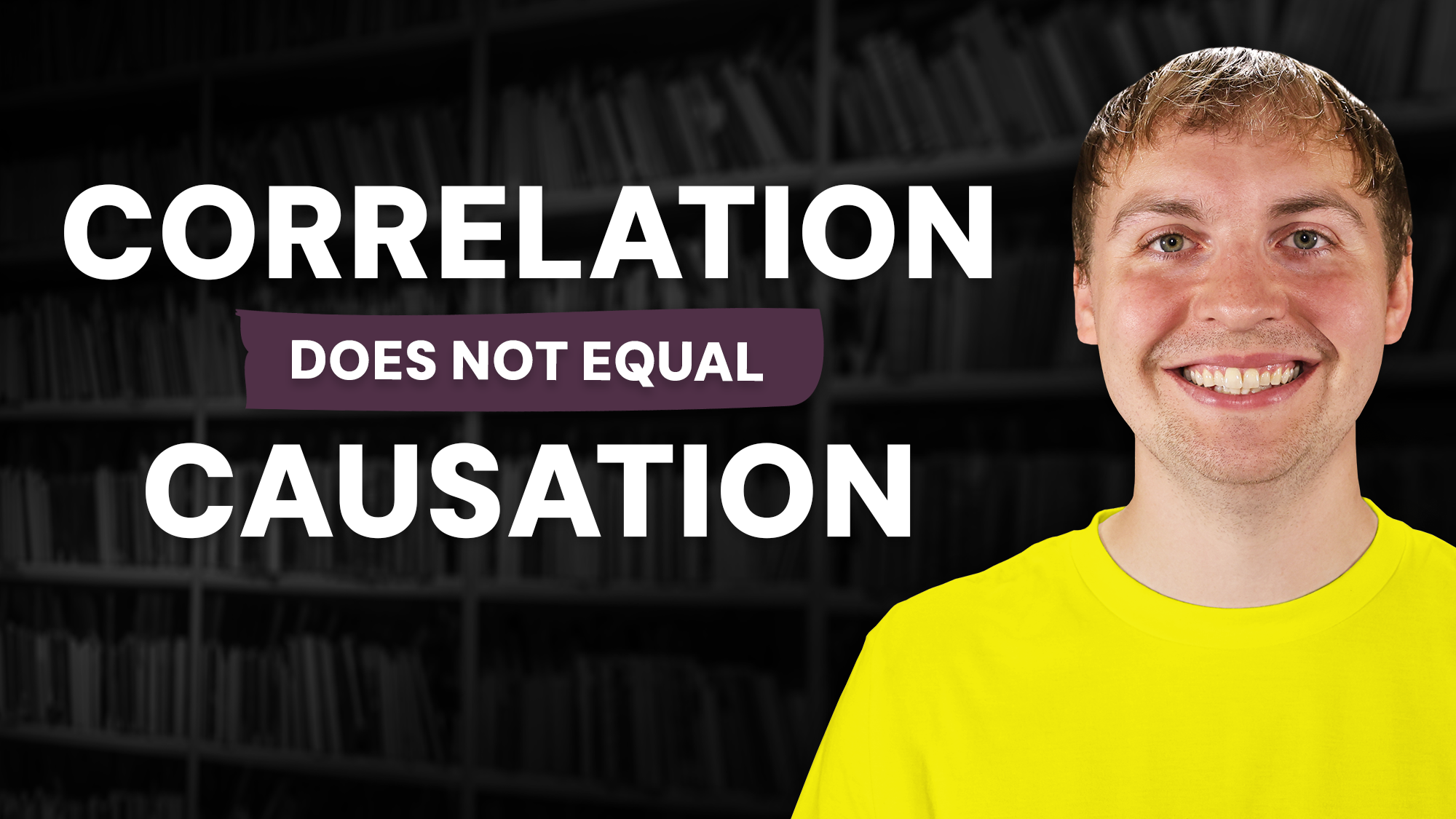
What does it mean that correlation does not equal causation? What is correlation? And what is positive correlation and how is that different from negative correlation? We’ll cover these questions and more in this video!
At its most basic, correlation is an association—it is looking at how one thing compares to another thing. The American Psychological Association, or APA, says that correlation is “the degree of a relationship (usually linear) between two variables, which may be quantified as a correlation coefficient.”
There is another term: correlation coefficient, which we should discuss.
The correlation coefficient is where the positive and negative parts of correlation come into the picture. The correlation coefficient is the number that represents the strength of the relationship between two variables.
With the correlation coefficient, it is represented on a scale of negative one, to zero, to positive one. Zero means there is no correlation. A perfect correlation would be a negative or positive one.
What is Positive Correlation?
With positive correlation, this means that when X goes up, Y will go up also. An example of positive correlation might be that the more the temperature goes up, the more cold drinks are ordered at a restaurant.
What is Negative Correlation?
Negative correlation, sometimes called inverse correlation, means that when X goes up, Y goes down. An example of this might be that the warmer the weather gets, the fewer hot drinks the restaurant sells. Therefore, as the temperature increases, hot drink sales decrease.
Keep in mind, positive correlation does not mean the correlation is stronger. The strength of the correlation is represented by the number being closer to one. Therefore, a positive correlation of .5 has the same strength as a negative correlation of -.5. To add to this, a correlation of -.8 is stronger than a correlation of +.5.
As mentioned, correlation does not mean or equal causation. In other words, we cannot determine cause and effect from correlational.
For example, you might have heard that when ice cream sales increase, shark attacks go up. To say that another way, ice cream sales and shark attacks are positively correlated. However, because this is just a correlational, that does not mean that the increase in ice cream sales are what causes the increase in shark attacks. Instead, with correlational, another variable might be influencing these things. In this case, as the weather is nicer and the temperature increases, more people buy ice cream. At the same time, more people are also swimming, increasing the number of sharks attacks.
Biserial Correlation – The first type of correlation to discuss is biserial correlation. This correlation is when one of the variables is continuous and the other is dichotomous. The APA says that a biserial correlation coefficient is “a measure of the strength of the association between a variable whose values may span a given range (e.g., grade point average) and a variable with only two discrete values (e.g., 0 or 1; pass or fail).”
Phi Coefficient – Second, let’s discuss the phi-coefficient (pronounced fi—rhymes with sky) correlation. In this case, both of the variables are dichotomous. For this, the APA says that it is “a measure of association for two dichotomous or binary random variables”. They provide an example of examining the relationship between people who are men or women and left- or right-handedness.
Pearson Product-Moment Correlation r – Third is the Pearson Product-Moment Correlation r. This is used for two variables and that have a linear relationship. This correlation is used for data that are interval or ratio data.
Spearman Rho Correlation – Fourth is the Spearman rho (pronounced row) correlation. For this, the APA states that it is a “measure of statistical dependence between two variables that were measured on an ordinal scale”. As a reminder, an ordinal scale is where something is ranked on a scale, such as one to five stars representing how well a movie was liked.
With the Pearson r, this ends with “r”. A helpful memory device might be to use this “r” to help you remember that this is for ratio and interval data.
Rosenthal offers a memory device for the Spearman rho correlation. For this, he says that since it ends with “o”, use this to remember that it’s for ordinal data.



If you or someone you know are needing immediate mental health assistance, please call or text 988, contact a local emergency telephone number, or go to the nearest emergency room.
By interacting with this website and channel, this does not constitute a therapist/client relationship. This content is intended for the purposes of entertainment and mental health education.
View additional disclaimers and notices on our Disclaimers page.